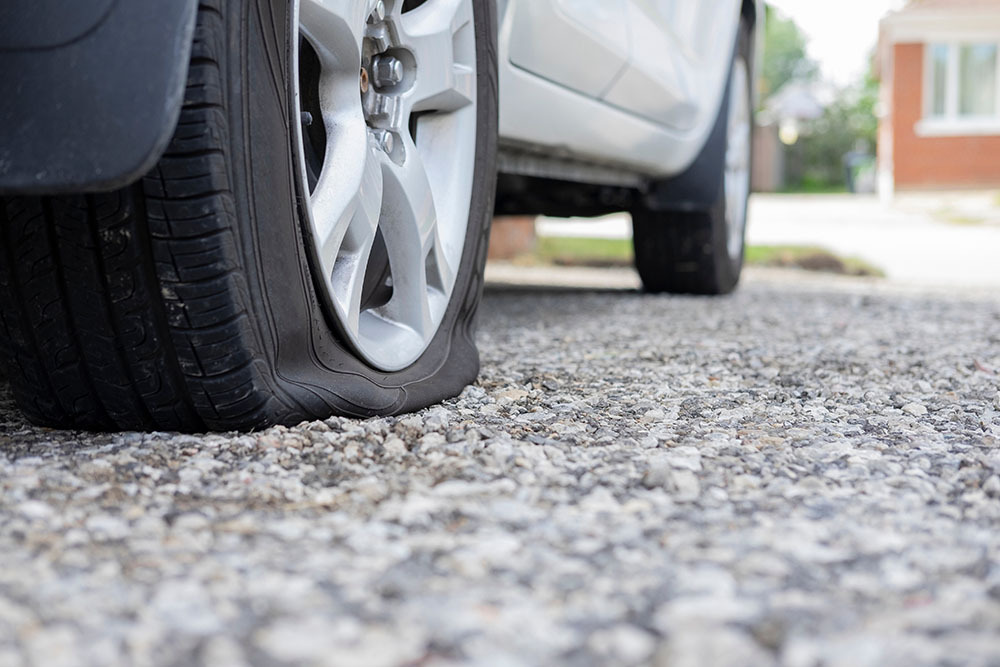TIRE TIPS

WHAT SHOULD YOU DO WHEN YOU GET A FLAT TIRE?
It’s not comforting to find yourself on the road with a flat tire. Although changing a tire is not difficult, it is a skill that every driver should master. Flat tires can be caused by anything as simple as glass or screws on the ground or by driving through deep potholes. It can also happen at any time of day or night. When you get a flat tire, you may not always get roadside assistance. Therefore, we’ve compiled a list of things to do if you have a flat tire.
Safely Pull Over
Once you get a flat tire, stop driving immediately, and look for a safe place to pull over, preferably a parking lot or the side of the road. Ensure the area where you park your car isn’t as busy and it’s a safe location to change your tire. If you’re on a highway and panicking, ensure you ask for roadside assistance services. Trying to fix a flat tire by yourself can be risky.
Also, make sure your hazard lights are on. They notify other drivers that you will not be moving anytime soon. This helps you avoid accidents on busy roads and highways, especially at night.
Be Prepared
Whenever you’re on the road, anything can happen, including getting a flat tire. When this happens, you need to have the right tools to help you fix a flat tire. Some of the important equipment to have include:
- A spare tire(s)
- Jack
- Rain Poncho (in case it’s raining)
- Air pump
- Gloves
- Lung Wrench
- Air pump
- Flashlight( for when darkness hits)
Always ensure you have all the above items when driving, especially a spare tire. Most vehicles come with an extra tire as standard equipment.
If you have reflective clothes, the better. This helps you in case you get a flat tire at night. A tire handbook or the owner’s manual can also come in handy for a new driver.
Replace the Flat Tire With a New Tire
If you are well-versed in tire replacement, start the process immediately using the right equipment and methods. Here’s a step-by-step process to help you with tire repair.
- Place the wheel wedges. Although your car is in parking brake and cannot move, always place wheel wedges, especially if you’ve parked in an inclined position. When replacing the front tire, place the wheel wedges at the back of the back tire and vice versa.
- Unscrew the nuts. Once you remove the wheel cover, you’ll spot the lug nuts. Loosen them using a lug wrench.
- Lift your car with the jack. Ensure the jack is under your car’s metal surface, and remove the lug nuts.
- Remove the flat tire. Removing the tire with the car raised and the lug nuts lose is easy.
- Replace the old tire with a new one. Pick up the new tire and position it onto the lug bolts. Tighten the lug nuts on the lug bolts before lowering the jack.
- Lower your car. Remove the jack and tighten the bolts. Finally, check the air pressure, put all tools in the car, and drive to your destination.
Having extra tires in the car is important to help you in such situations. To get affordable and long-lasting tires, contact TreadNation.

